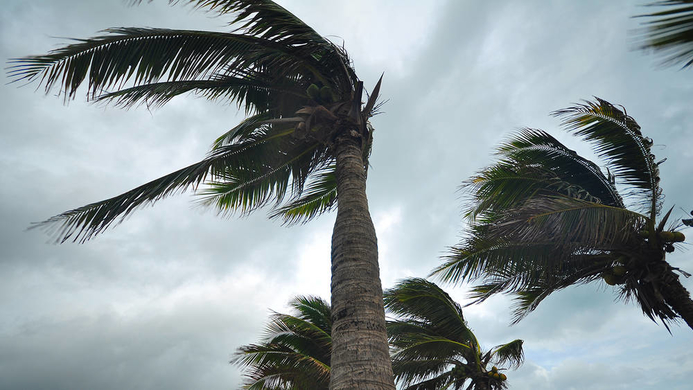The Fukushima disaster in 2011 first promoted Matray and Dessaint’s interest in the question of why managers often make mistakes when assessing business risk in the wake of crises. They learned that following the event a number of firms increased their cash holdings. “Cash is a buffer against liquidity shock,” he explains. “The widespread switch to cash suggests businesses increase their estimation of the risk.
The question then is whether this increased estimation is rational or is an overreaction.” Indeed, studies consistently show that people respond to the manifestation of a risk in surprising ways; everyone is guilty of making decisions contrary to objective probability calculations. “Behavioral economics argues that people can be irrational and make mistakes in a systematic way; in a sense, people are ‘predictably irrational’,” explains Adrien Matray. “Because these mistakes are predictable, perhaps we can find ways to avoid them, correct for error, or factor irrationality into our plans and strategy.”
The availability heuristic
When assessing risk, we tend to use mental short cuts or heuristics, a “rule of thumb” to simplify the problems we face. This way of thinking can save time, but it also leads to mistakes. The availability heuristic implies that people infer the frequency of an event (its risk) from its availability, i.e., the ease with which concrete examples related to the risk come to mind. “When you go skiing, you might estimate the risk of breaking your leg,” says Matray. “If a friend has recently broken a leg while skiing, this event will be a vivid salient risk and quickly spring to mind – you will probably overestimate this risk.
However, if you are from a family of good skiers and no-one has ever broken a leg, then this event will seem unlikely and you will underestimate the risk.” Do manager succumb to this common mistake when they face salient risks? “When firms are close to an event, are managers likely to overestimate the risk that they could be affected by subsequent similar events?” Matray asks. “Is there a discrepancy between risk perception and actual risk?”
Hurricanes: cash holdings as a measure of risk perception
Hurricanes are salient events because they cause death, destruction and financial loss – they grab your attention. However, if you have been in the vicinity of a hurricane, the probability of you being hit in following years does not increase. In other words, hurricane risk is ’stationary’; the occurrence of a hurricane contains no information about the probability of a hurricane occurring again in the near future.
Therefore, any change in your behavior after a hurricane would indicate an overestimation of future risk. With this in mind, Matray and his colleague Olivier Dessaint accessed data available through the Spatial Hazard and Loss Database for the United States (SHELDUS). They obtained the date and location of all major hurricanes (15 in total) that made landfall between 1989 and 2008 and caused damages in excess of $5 billion. The pair decided that cash holdings were a good measure of risk perception as companies keep cash as a buffer or ‘insurance’ against liquidity shock. The researchers predicted that any variation in estimated risk should translate to a variation in corporate cash holdings.
As a direct proxy, Matray and Dessaint also looked at annual business reports to see when hurricanes are mentioned as a potential risk. They compared the reports of businesses close to hurricanes, to those further away, and evaluated if the likelihood of businesses mentioning hurricanes altered following such events.
They are trained, well-educated professionals but salient events cause many managers to make biased financial decisions.
The overestimation of risk in the aftermath of salient events
The analysis revealed that in the aftermath of a hurricane nearby businesses temporarily increased their cash reserves by an average of $15 million, even though they were unaffected. Their sales and profitability earnings did not change after the event, yet they behaved as if the risk of future liquidity shortage had increased. Interestingly, the increase in cash for neighboring firms matched the average cost to a business affected by hurricane damage. "This finding suggests that managers have observed this salient event and consider it 100% likely that their business will be hit next year,” Matray points out, “although the actual probability remains just 6%.”
His examination of annual business reports showed the same tendency to overreact: businesses in the vicinity of a hurricane are 86% more likely to mention them as a risk, but within two years mention of hurricanes as a risk drops back down to baseline levels. “The fact that the increase is only temporary is very consistent with the availability heuristics. The sudden salience of liquidity risk increases perceived risk and leads managers to increase cash holdings even though the real risk does not change,” says Matray.
“Over time, as salience decreases, both perceived risk and cash holdings revert to pre-hurricane levels. When exposed to such a salient event, rational risk estimation seems to be completely disregarded. Managers see the likelihood of being affected by a future event as almost certain. They are trained, well-educated professionals but salient events cause many managers to make biased financial decisions.”
This irrational response can be bad for business, Matray warns. “After a hurricane, nearby businesses stock pile for the future, but this is expensive – the cash could be used for further investment and company growth. Shareholders do not like large company reserves and a drop in share prices reflects this. In addition, businesses benefit from tax deductible interest on debt, and when they hold cash they don’t benefit from the tax shield debt provides, so this costs them money too.”









